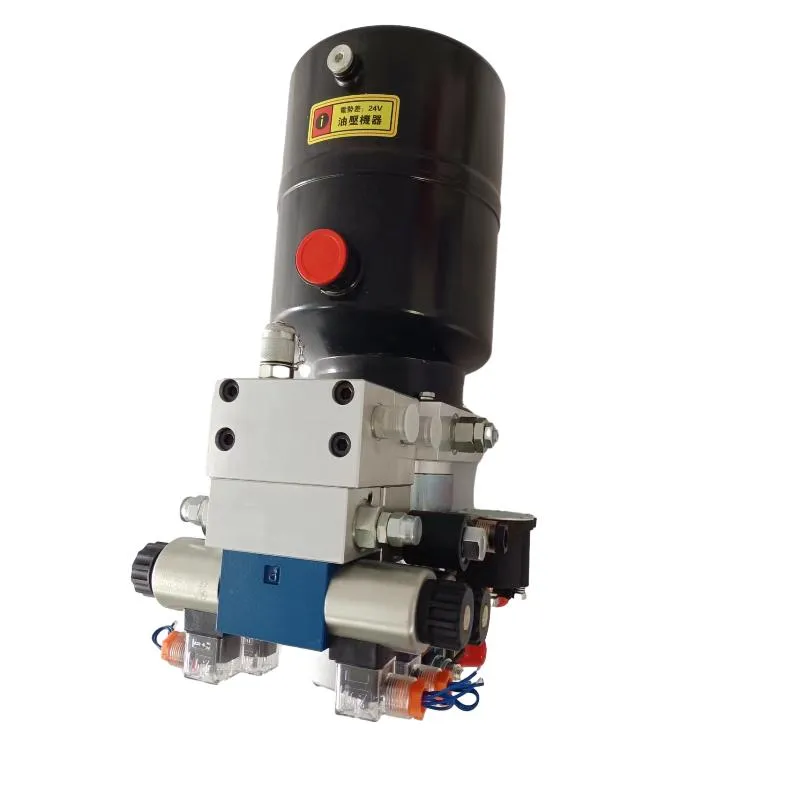Nov . 21, 2024 00:50 Back to list
repack hydraulic cylinder products
Understanding Repacking Hydraulic Cylinders A Comprehensive Guide
Hydraulic cylinders are critical components in many industrial and construction applications. They convert hydraulic energy into mechanical energy, allowing for the controlled movement of heavy loads. Over time, however, like any mechanical equipment, hydraulic cylinders may require maintenance, including repacking. Repacking a hydraulic cylinder refers to the process of replacing its seals and other internal components, ensuring its proper functioning and extending its lifespan.
Importance of Repacking Hydraulic Cylinders
Repacking hydraulic cylinders is essential for several reasons. Firstly, it helps maintain optimal performance. Over time, seals can wear out due to pressure, heat, and contamination, leading to leaks. A leaking cylinder can result in decreased efficiency, increased operating costs, and potential safety hazards. By regularly repacking hydraulic cylinders, operators can avoid these issues and maintain system reliability.
Another crucial aspect of repacking is cost-effectiveness. While a complete replacement of hydraulic cylinders can be expensive, repacking is a more economical solution that restores functionality without the need for a full buy-out. This is particularly beneficial for businesses that rely heavily on their machinery and cannot afford prolonged downtimes.
The Repacking Process
repack hydraulic cylinder products

The process of repacking a hydraulic cylinder involves several steps. It typically begins with removing the cylinder from the equipment. This requires proper safety measures, as hydraulic cylinders can be under significant pressure. Once removed, the cylinder is disassembled, and all internal components are inspected for wear and damage.
The next step is to replace the old seals with new ones. This may include various types of seals such as O-rings, wipers, and piston seals, depending on the specific design of the cylinder. It's essential to choose high-quality seals to ensure durability and performance. After installing the new seals, the cylinder parts are cleaned thoroughly to remove any debris and contaminants.
Once reassembled, the hydraulic cylinder is tested to ensure there are no leaks and that it operates smoothly. Repacking should be done periodically as part of a regular maintenance schedule to prevent unexpected failures and prolong the life of the equipment.
Conclusion
Repacking hydraulic cylinders is a vital maintenance task that can lead to significant improvements in efficiency, safety, and cost management. By understanding the importance of this procedure and adhering to a regular maintenance schedule, businesses can ensure their hydraulic systems operate at peak performance. Investing in quality seals and professional services for repacking can make a substantial difference in the longevity and reliability of hydraulic machinery. Ultimately, a well-maintained hydraulic system not only enhances productivity but also contributes to a safer working environment.
-
1.5 Ton Turbocharged Cylinder 80/95-40/60-35-124 | High Performance
NewsAug.22,2025
-
High-Performance Fork Lift Hydraulic Power Units
NewsAug.21,2025
-
High-Quality Set of 50/60-45-290 471 - Precision Parts
NewsAug.19,2025
-
1.5 Ton Lifting Cylinder-Hebei Shenghan|Heavy-Duty Lifting, Precision Engineering
NewsAug.18,2025
-
1.5 Ton Lifting Cylinder-Hebei Shenghan|Precision Hydraulic Solutions&Industrial Lifting
NewsAug.18,2025
-
1.5 Ton Lifting Cylinder 70/82-40-290-535 - Hebei Shenghan Hydraulic Machinery Co., Ltd.
NewsAug.18,2025
